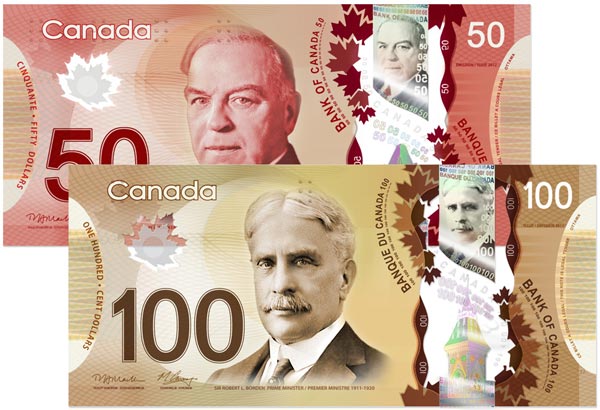New banknotes made of plastic
Administrator | Jun 21, 2011 | Comments 0
The Bank of Canada unveiled its new polymer $100 bill Monday, June 20 – featuring anti-counterfeiting technology.
Most noticeable are two transparent windows that make the bills difficult to forge, but easy to verify. The one extending the width of the bill also features holographic images; another in the shape of a maple leaf shows the amount of the bill when examined through a single light source. (See video below for demonstration)
The new $100 bill is to be available as legal tender in November 2011. The polymer $50 note will follow in March 2012 and the remaining denominations – the $20 note, followed by the $10 and $5 notes – will be unveiled and issued by the end of 2013.
The new bills were unveiled early as they do not yet work with automated banking machines and some equipment may require modifications. The Bank of Canada said that unveiling a less common bill will help ease the transition period.
With the introduction of the polymer bank note series, the Bank’s main focus continues to be security. “Canada’s new bank notes will have innovative security features that are easy to verify,” said Mark Carney, Governor of the Bank of Canada. “The leading-edge technology in these notes will expand the frontiers of bank note security.”
In addition to enhancing security, the new bank note series is to be easier to verify, more economical and have a reduced environmental impact. The Bank of Canada evaluated a number of options before deciding on a new suite of security features and on the use of polymer material – which is expected to last at least 2.5 times longer than the current cotton-paper bills.
“With these new notes, the Bank of Canada will provide Canadians with a durable, high-quality, secure form of payment that they can use with confidence,” added Governor Carney.
Filed Under: Local News
About the Author:



































